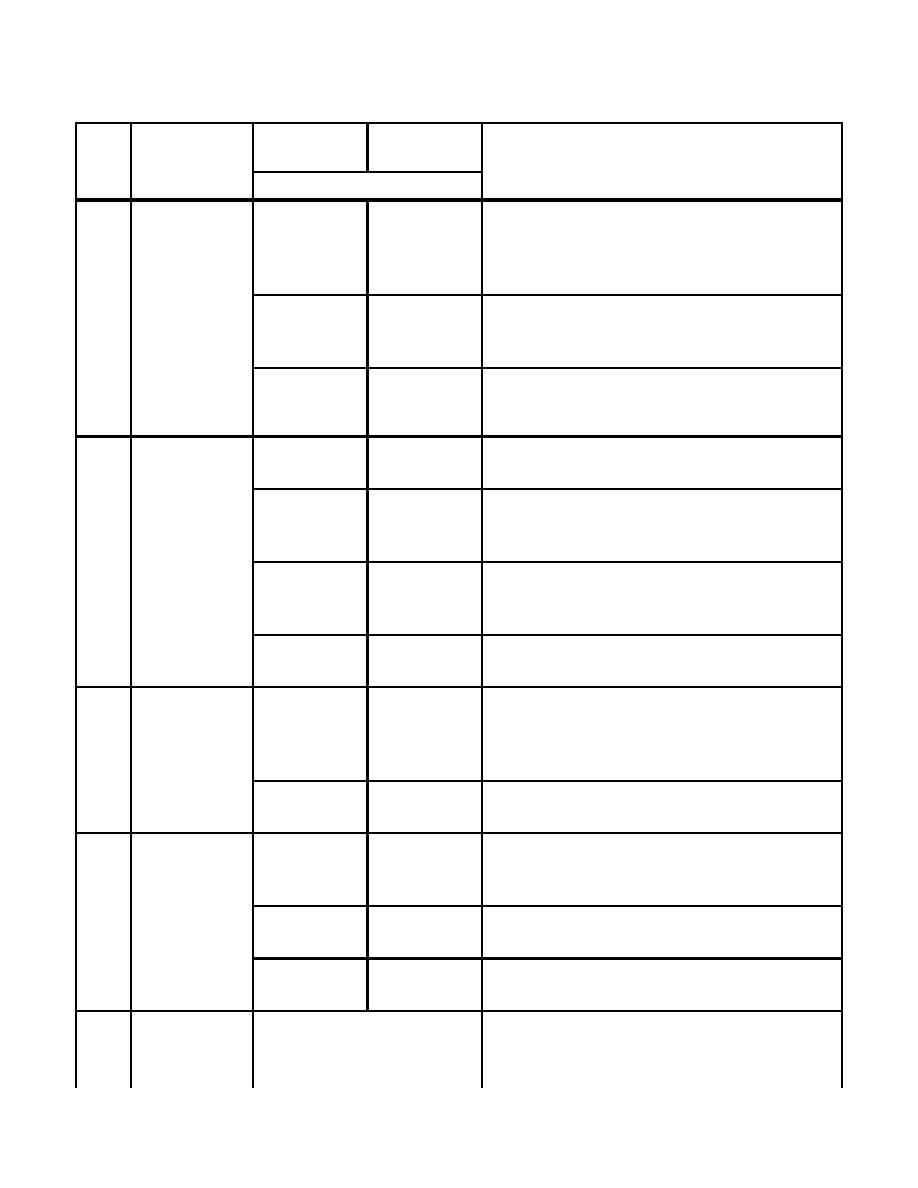
Chapter 3
Table 3.2. Runways.
Class A
Class B
Runway
Runway
Item
Item
No.
Description
Requirement
Remarks
1
Length
See Table 3.3
See Remarks For Army airfields. For Army Class B
runways, runway length will be determined by
the Air Force MAJCOM for the most critical
aircraft in support of the mission.
See Remarks
See Remarks For Air Force airfields, runway length will be
determined by the MAJCOM for the most
critical aircraft in support of the mission.
See Remarks For Navy and Marine Corps airfields, see
See Remarks
NAVFAC P-80 for computation of runway
lengths.
2
Width
30 m
46 m
Army airfields and Air Force airfields, not
[100 ft]
[150 ft]
otherwise specified.
NA
90 m
B-52 aircraft. AFI 11-202 V3 allows that B-52
[300 ft]
aircraft may routinely operate on 60 m (200 ft)
wide runways.
23 m
N/A
Navy and Marine Corps class A runways.
[75 ft]
Runway width for T-34 and T-44 will be 45 m
[150 ft].
NA
60 m
Navy and Marine Corps airfields.
[200 ft]
15 m
60 m
Army and Air Force airfields.
3
Total width of
[50 ft]
[200 ft]
shoulders
(paved and
unpaved)
7.5 m
46 m
Navy and Marine Corps airfields.
[25 ft]
[150 ft]
7.5 m
7.5 m
Army airfields, and Air Force airfields not
4
Paved
[25 ft]
[25 ft]
otherwise specified below.
shoulder
width
NA
3m
Air Force airfields designed for Trainer,
[10 ft]
Fighter and B-52 aircraft.
3m
3m
Navy and Marine Corps airfields.
[10 ft]
[10 ft]
5
Longitudinal
Maximum 1.0%
Grades may be both positive and negative but
grades of
must not exceed the limit specified.
runway and
Exception for shoulders: a 3.0 percent
h ld
3-3



 Previous Page
Previous Page
